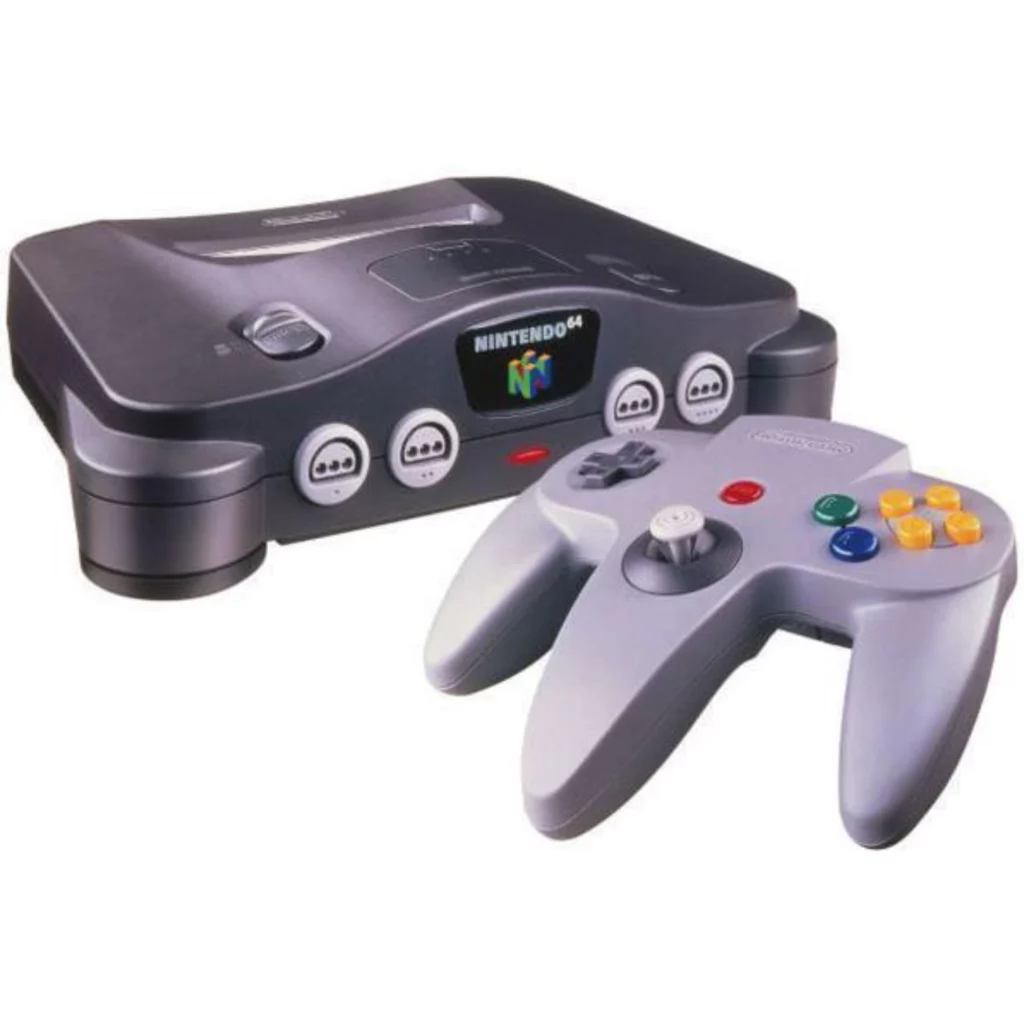The Nintendo 64 console, often abbreviated to N64, is one of the most iconic gaming consoles of all time. Launched by Nintendo in 1996, it marked a significant turning point in the world of video games. Notably, with its 64-bit processing power, revolutionary controller design, and library of classic games, these games have left an indelible mark on the industry.
Development and Launch
Development of the Nintendo 64 began in the early 1990s under the code name “Project Reality.” Nintendo partnered with Silicon Graphics, Inc. (SGI) to create a console that would surpass the graphics capabilities of its competitors. This collaboration aimed to offer high-quality 3D graphics and innovative gameplay. In order to differentiate the N64 from previous consoles.
On June 23, 1996, the Nintendo 64 was released in Japan. It was followed by North American releases on September 29, 1996, and European releases on March 1, 1997. Its launch was highly anticipated, with gamers eager to experience the new era of 3D gaming.
Innovative Controller Design
One of the most distinctive features of the Nintendo 64 was its controller. Its unique three-pronged design allowed for different grips, adapting to various types of gameplay. The inclusion of an analog stick was revolutionary. It provided precise control for 3D movements. As a result, it became a standard feature of future console controllers. The N64 controller also introduced the Z-Trigger, an ergonomic button on the back of the controller. This enhanced the gaming experience in first-person shooters and other genres.
Iconic Games
The Nintendo 64 console is home to some of the most beloved and influential games in video game history. Titles like “Super Mario 64,” “The Legend of Zelda: Ocarina of Time,” and “GoldenEye 007” set new standards for game design, storytelling, and interactivity.
- Super Mario 64: This game redefined the platforming genre with its open-world design and intuitive controls. This game demonstrated the capabilities of 3D gameplay.
- The Legend of Zelda: Ocarina of Time: Often considered one of the best games of all time. It introduced a rich narrative, an expansive world, and innovative mechanics. For example, Z-targeting for combat.
- GoldenEye 007: Pioneer of the first-person shooter genre. It featured a captivating single-player campaign and a multiplayer mode that became essential for social gaming.
Technical Specifications and Accessories
The Nintendo 64 boasted impressive technical specifications for its time. These included a 64-bit processor, 4 MB of RAM (expandable to 8 MB with the Expansion Pak), and support for high-resolution graphics. It also used cartridges instead of CDs. This offered faster loading times but limited storage capacity.
Several accessories enhanced the N64 experience:
- Rumble Pak: Introduced force feedback, adding a tactile dimension to gameplay.
- Expansion Pak: Increased RAM, allowing for higher-resolution graphics and improved gaming performance.
- Transfer Pak: Allowed data to be transferred between N64 games and Game Boy games. Adding new layers of interactivity.
Legacy and Impact
The legacy of the Nintendo 64 lives on. From its innovative design to its iconic games and its influence on future gaming consoles, it pioneered 3D gaming and set standards that are still evident in today’s video games. The console remains a nostalgic favorite among gamers. It continues to be celebrated through Virtual Console re-releases and emulation.
Conclusion
The Nintendo 64 wasn’t just a gaming console. It was a revolutionary platform that changed the landscape of video games. Its innovative hardware, groundbreaking games, and enduring legacy have solidified its place in the annals of video game history. For many, the N64 represents a golden age of gaming. A console that continues to inspire and entertain new generations of gamers.





